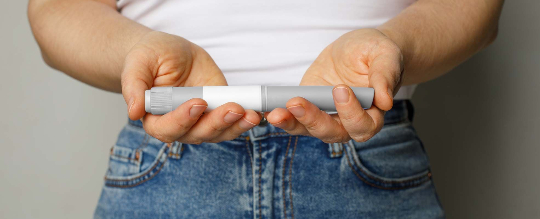It’s a common experience that one can manage without treats, but if you have a little, the amounts quickly get out of hand. And people wonder – usually finding the culprit in “sweet cravings,” sugar addiction or something similar. And yes, the experience does feel like an addiction, but it’s not ultimately a property of the foods but rather learned behavioral patterns – and these can be influenced. So you can indeed learn to move away from being a sweet craver to a non-sweet craver.

Why Does Eating get out of Hand?
Behind this experience, various factors can be found (more on this later). But practically always, you’ll find “forbidden fruits” and the craving for them, meaning the treat has been made into something in one’s mind that should be avoided and can’t be eaten in moderation. And that’s how it is with food – as with many other things – that this abstaining thought dams up cravings for the forbidden food.
When the idea has formed in one’s head that a certain treat shouldn’t be eaten, the result in research situations is quite consistently about a 2-3 fold increase in eating treats. This reflects the growth of cravings as a result of negative thoughts and is the beginning of the idea ” that a chocolate bar only makes you angry, it has to be a whole bar!“
When a person trying to abstain from treats then thinks of “allowing” themselves a chocolate candy, for instance, that one candy isn’t enough. A suitable comparison for pent-up cravings would be an actual dam. When treats aren’t eaten, the dam is “intact,” but when that first candy (or something else) is taken, the dam “breaks,” and all the pent-up cravings (like water) come through. And then almost all the treats found at home are consumed.
So the core problem is the underlying forbidden thought. And it only intensifies with attempts at candy abstinence. The solution is to learn to eat them permissively and in moderation. Candy abstinence may work for a while, but for most, it breaks sooner or later.
How Does the Experience Fade?
Usually, when one starts to learn moderation, eating still gets out of hand – this scares people, faith in the possibility of moderation for oneself collapses, and behavior returns to the old avoidance. Here, two phenomena need to be distinguished:
It’s Worth Giving Time to Learn Something New
Even with good starting points, eating gets out of hand in the early stages of learning moderation. It’s utopian to think that the burden of history could be shaken off just by suddenly giving permission to eat.
Yes, the power of abstinence lurks in the back of the mind and drives cravings for a while. But when permissiveness is given space, it does emerge quite quickly.
Attempts to get Rid of Treats are Made at a Bad Time
A much more common situation, however, is that permissiveness is learned when many other things driving cravings are still amiss. If meal rhythms are off, one tries to manage with minimal eating, stress levels are sky-high, or emotions guide eating, permissiveness doesn’t change anything. It’s likely to lead only to increased treat consumption.
And the key thing is to fix these other issues first and simultaneously learn permissiveness with treats. Or if treat episodes are really scary, start learning permissiveness only when you begin to have an inkling that other lifestyle habits are in order.
It might take a year, but what can you do when things can be difficult and there are hardly any straightforward success stories seen in these matters – these things need to be put in order anyway, and then permissiveness starts to work. Although at this stage, candy abstinence would work much better than before, I still suggest learning permissiveness instead of candy abstinence.
One additional factor is also the concept of moderation, which I have written about before. A common problem is that permissiveness is thought of as eating a couple of pieces of chocolate once a week. But that’s not permissiveness for most people; a sense of satisfaction usually requires more treats and more often for most.
Other Helpful Factors
So it’s not just about the attitude towards treats, of course. It’s also about stress state, emotions, and other eating. Too little and irregular eating increases cravings for anyone. Some eat due to their emotions. And stress guides eating towards sweets.
These are all important things to fix if you recognize they’re off – and they very often are off. So the work order for aiming at a moderate treat experience could be something like this:
Mind Affects Body
Are you exhausted, stressed, or having mood problems – improve the situation, seek help, empower yourself. Eating due to stress can easily affect why you constantly crave sugar-containing treats.
Use Appropriate Portion Sizes
Are you eating too little? Eat as much as you want, but preferably mostly quality and varied food. Healthy food can basically be eaten in large quantities, as long as the food is of the right kind.
Steady Meal Rhythm
Learn to eat regularly, because it keeps cravings in check. Then you also don’t as easily choose options that contain quick energy.
Permission to Indulge
Give yourself permission to eat treats. You mostly eat proper food, but if you feel like having treats, you can eat them with a clear conscience. Permissive eating doesn’t mean, however, that everything that comes under your nose must be eaten.
It’s not a big surprise that the marching order is quite similar to weight management in general. Moderation in general requires certain things.










